The basis of any SEO strategy comes down to SEO copywriting. While there are many technical tasks you can do to improve your SEO, if your actual content is not SEO-friendly, it won’t see good rankings in search results.
You need to keep a few SEO best practices in mind when you write copy for your website. This will help your web pages get indexed for the right search terms to boost your SEO performance.
In terms of SEO copywriting, a few small tweaks make a big difference.
Follow this complete guide to SEO copywriting for everything you need to know – including the best tips and tactics to help you create more search-engine-optimised content.
What is SEO Copywriting?
SEO copywriting is the process of writing web content that is designed to perform well on search engines. This content should appeal to both search engines, as well as users.
An important part of SEO copywriting is optimising the content with keywords so that search engines can understand what it’s about and know how to rank it. At the same time, you can’t only write for search engines, as your copy won’t be very engaging.
Successful SEO is all about offering a high-quality website to your users. The better and more relevant the content your website offers users, the better your website should perform in search engines.
This means SEO copywriting is also about understanding your audience and writing in a way that grabs their attention and interests them.
Finally, SEO copywriting also needs to help your business. Your SEO strategy needs to have a goal, which could be to get users to sign up for your mailing list, navigate to a product page, and so on. Successful SEO copywriting doesn’t only help your web page achieve a good position in Google, but it also engages your reader and gets them to take the right action you want them to.
How Does Copywriting Help With SEO?
Copywriting is one of the most important factors in SEO. This is because copywriting affects what search engines understand about your web content, as well as what the user experience for this content is like. These are the two critical elements that will get your page ranking.
SEO copywriting involves optimising your content with the best on-page SEO practices. These are the elements that you change on your web pages to help them gain a better chance of SEO rankings. Some examples of on-page SEO tactics include:
- Adding keywords to your content
- Properly structuring your content with the right headings
- Using keywords in your meta title and meta description
- Adding alt tags to images
By incorporating these elements into your web page copy, you help Google understand what your page is about and you make it more relevant for specific search terms. This is what SEO copywriting is all about.
SEO Copywriting Starts With Keyword Research
There’s a lot that goes into successful SEO copywriting. However, the first place to start is by establishing what keyword your page is going to target.
Keywords are the terms or phrases that people type into search engines in order to find your content. The closer your content addresses these search terms, and the more relevant it is, the better its chances will be of ranking.
When you publish a piece of content, Google needs to index it based on keywords. To do this, it needs to understand what the main keywords your page is about.
Here’s an example of how content clearly addresses a keyword:
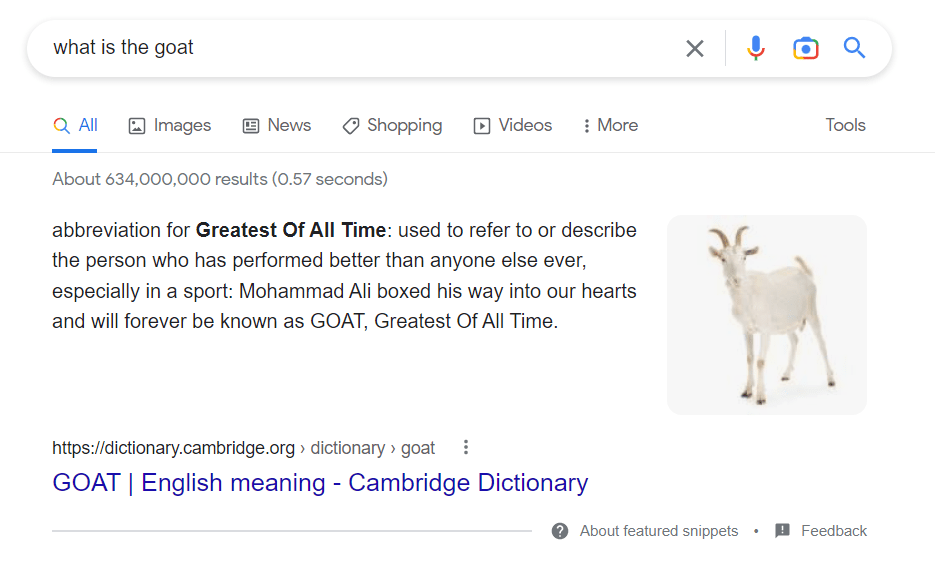
Before you start the SEO copywriting process, you’ll need to perform keyword research. You can use an SEO tool to help you discover new keywords and access important data around them. Once you have established a target keyword, you can start to develop your SEO-friendly copy around it.
There are two essential elements involved in keyword research:
Keyword Metrics
First, you’ll need to understand the specific metrics around each keyword. The two most important ones are:
- Search volume: how many times a keyword is searched each month
- Difficulty: how competitive a keyword is
When determining which keywords to target, you’ll need to strike a balance between these two metrics.
On the one hand, you want to target keywords that have as high of a monthly search volume as possible to increase your chances of gaining traffic. On the other hand, the higher the search volume, the more competitive the keywords will probably be. This will make it tricky to rank for the keyword.
Spend time researching the keyword until you have found one with the ideal blend.
Search Intent
Search intent is possibly the most important element surrounding SEO copywriting. This refers to what kind of information the user wants to find out when they search for the keyword.
The closer your content can match search intent, the better the keyword will perform.
You can establish search intent by researching the keyword yourself and seeing what kind of content performs best and ranks highest. You’ll need to make sure that your content can compete with this.
When choosing a keyword, you also need to pay careful attention to the search intent matching your business’s SEO goals.
When looking at search intent, you’ll need to focus on short-tail and long-tail keywords. Shorter keywords have a greater search volume, but they are less direct and often don’t have a very clear intent, like this:
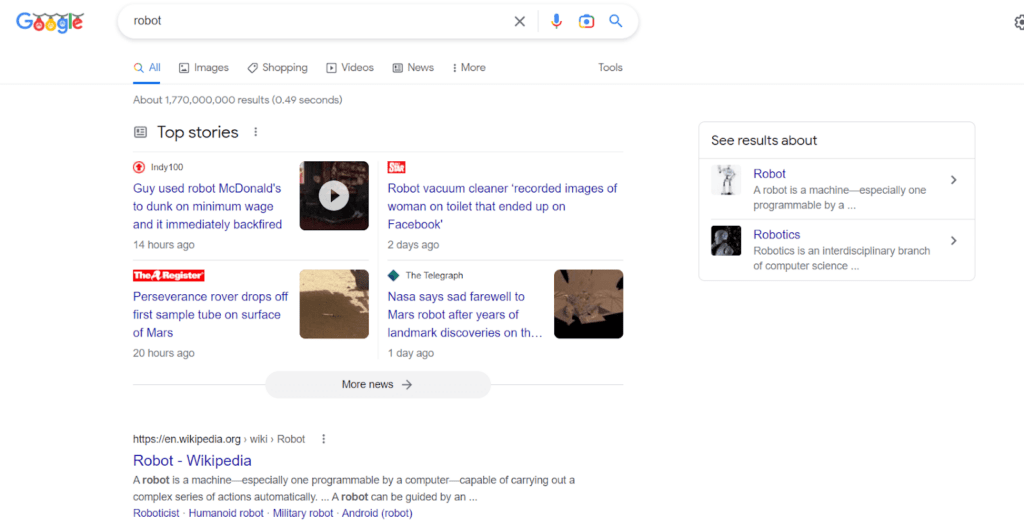
Long-tail keywords are more specific. While they might help you attract less traffic, you can be sure the traffic is more highly targeted, like this:
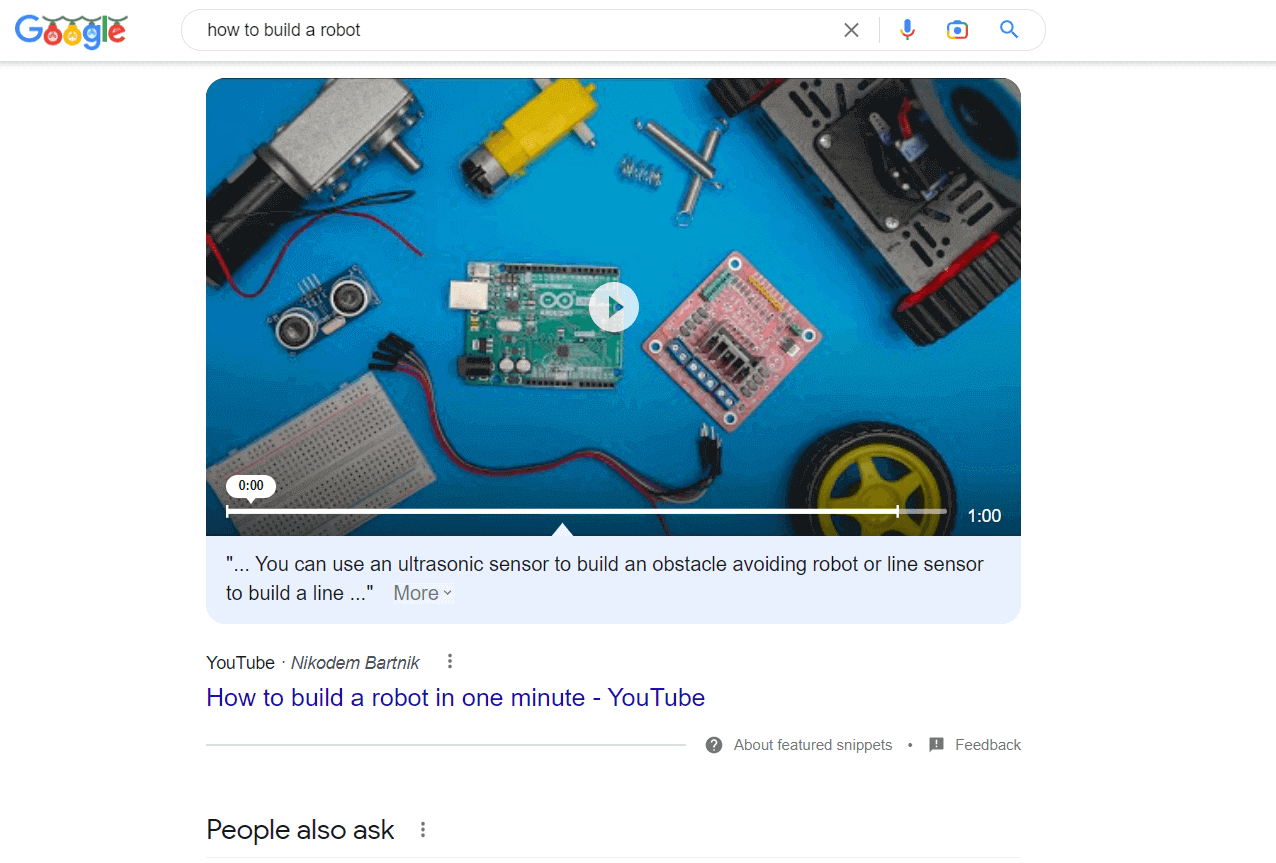
When performing keyword research, make sure you develop variations of both long and short-tail keywords to help you focus your search intent more clearly.
How to Write SEO-Friendly Copy
Once you have your keywords established and you know what your web page is going to be about, it’s time to start writing.
As you can imagine, there needs to be a very clear thought process that goes into SEO copywriting. It’s not just about writing a good copy – instead, it needs to be carefully and strategically planned in order to make a big impact on search engines.
Here are some of the main processes and tactics involved in SEO copywriting.
1. Do Your Research
Before you can start typing away at your keyboard, you’ll need to perform thorough research into your keyword and topic. This starts by deeply analysing your competitors.
Search for your target keyword and read the top-ranking articles. Understand what kind of information these articles cover, how they target the right search intent, what sections the pages include, how long they are, and so on.
These are the pages that Google thinks offer the best resource for the target keyword, so it’s important that you understand what this is the case and make sure that your page can compete.
So get a solid grasp of the topic and of what the competition is doing.
When researching your content, also pay attention to the “People also ask” and “related searches” sections on Google. This can help reveal more information for you to cover.
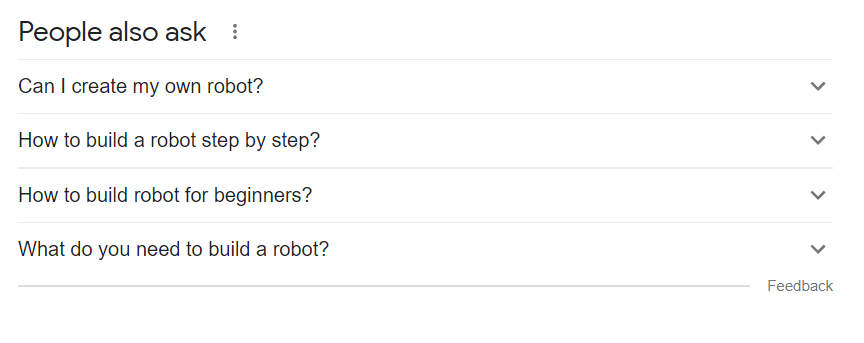
Thorough research should also involve watching YouTube videos on the subject, scrolling through relevant online forums, and possibly listening to a podcast or two. The more informed you are about your subject and audience, the better your copy will be.
When researching the competition, also pay attention to any possible rich snippets that exist in the SERP. These are things like answer boxes, recipes, or star ratings that display as part of the page’s search engine listing. If your competitors are using this, then you can too.
2. Outline Your Content
Once you’ve done your research, the next step is to strategically plan out your content. This involves setting out all of the headings and subheadings that you will cover.
This is important because Google ranks content based on how valuable and relevant it is for the user. This means you need to fully cover the topic if you want your content to rank well.
By making sure you provide a complete guide on your target keyword and don’t leave any questions unanswered, you will be able to offer more value to your audience. Get this right, and you should be able to gain better rankings from your content.
This is not to say your content needs to be overly long, it just needs to be as informative as possible. Of course, this only counts if everything you cover is relevant to your content.
So, outline your headings and make sure you cover all of the questions your searcher will want to find out. You can establish this through your competitor research and by understanding your keyword’s search intent.
Properly Structuring Your Content
An essential part of SEO copywriting includes applying the best on-page SEO tactics. This involves properly structuring your content.
When you outline your content, make sure that you use the correct heading tags (H1, H2, H3, etc). These need to be properly marked up and laid out to help Google crawl and understand your content more easily.
Another key element in doing this includes adding your target keyword to your page title and headings. This will make it easier for Google to understand what your content is about and know how to index it. We’ll get into more detail on proper keyword use later on.
3. Write Your Content
Now the bulk of your planning is complete, it’s time to write your SEO content. There’s quite a lot to consider here in order to make your regular copywriting more SEO-friendly.
As we mentioned earlier, SEO copywriting needs to appeal to both search engines as well as to website visitors. Here are some tips to help you achieve this.
Writing for Search Engines
The first element involved in SEO copywriting is writing copy that search engines understand. Your aim is to show search engines that your content is about your target keyword, and that it’s the best possible resource for this search term.
To do this, start by inserting your main keyword in your text. This needs to be done naturally throughout the text. The optimal keyword density is around 1 – 2%. Ensure you place the keyword in your title, meta elements, headings, and in the first paragraph of your content.
There’s no need to rely too heavily on keywords, rather focus on keeping the copy natural so Google will still understand what it’s about.
The other thing to pay attention to is NLP (natural language processing). While you may have one target keyword, there will be various words and phrases related to this. By incorporating these phrases into your copy, you provide more context for Google to understand what your copy is about and how to index it.
For example, your target keyword might be “best fishing boat”. Words that are naturally associated with this might be “fishing rod”, “horsepower engine”, “fishing rod holder”, or “water”. They’re not exact keywords, but they add more background and context to your copy. Using a tool like Surfer SEO is a great way to identify these words and enrich your copy.
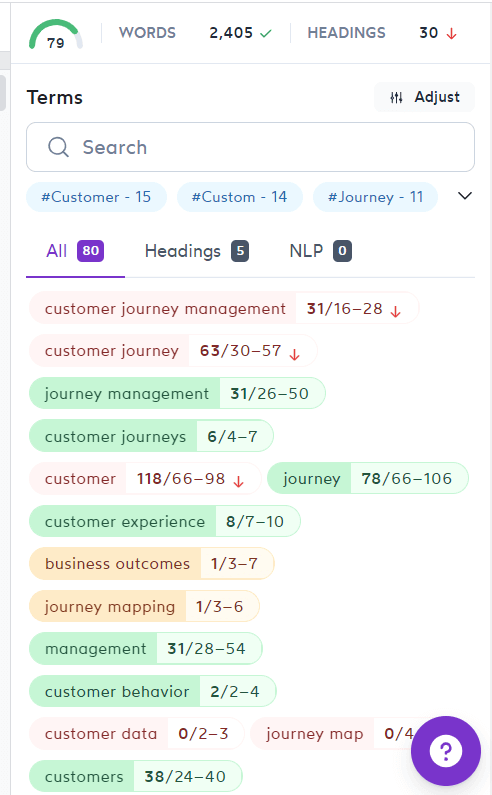
Above: Example of how you can use Surfer to access new NLP keyword ideas
Writing for People
Focusing on optimising your content for search engines is important, but ultimately they’re not your audience. What’s even more important is that you write for your target reader.
As long as you produce valuable, high-quality copy, then you’ll have a good chance of achieving good SEO performance. This is what SEO is all about.
Search engines are smart, and they can understand when a page offers genuine value to readers, and when it’s just trying to trick the algorithm with keywords. If you’re guilty of the latter, your page may get penalised.
So, always write with your readers in mind. Make sure your copy sounds natural, that it’s easy to read, and that it offers insights, action items, and answers the exact questions a user wants.
Don’t include any sections in your copy that are unrelated or irrelevant to your target keyword.
4. Optimise Your Final Draft
Your copy is written. Well, almost.
Before you’re done, you’ll want to make sure that it’s truly SEO-friendly.
First, check the copy for any grammar or spelling mistakes (use Grammarly). Get someone else to read it to ensure it makes sense.
Then, go over the copy again with your audience in mind. Do you answer all of their questions? Are you direct enough? Is anything confusing or boring to read? How engaging is the copy?
Then check your keywords and on-page SEO tactics to ensure everything is up to scratch.
Finally, compare your draft with the top-ranking pages for your target keyword. Make sure you aren’t missing any information, that you’re offering a relevant resource, and that you don’t include any unnecessary information.
Different Types of SEO Copywriting
SEO copywriting can come in many different forms. While you should always target a keyword and ensure your copy is optimised for search engines and readers, there are various types of copy you can apply these tactics to.
Here are some of the main forms of SEO copywriting you should know about. In each case, always ensure the search intent of your target keyword matches the copywriting style.
1. SEO Blog Posts
This is your main type of SEO content as blogging can improve your business. Blog posts can be informative, entertaining, educational, or interesting. Wherever the case, they need to provide clear information on a specific topic.
These are what most people land on when they search for an answer, so including SEO blog content is essential in your SEO strategy.
2. Landing Pages
Landing pages are pages on your site that have a single clear objective. This might be to book a demo, promote bookings, gain email signups and contest entrants, or more. Whatever the case, make sure your SEO copy aligns with your landing page goal.
3. Website Copy
Web copy is all the copy on your website that isn’t your blog. The more SEO optimised this is, the easier it will be to attract new apple to your website and business. General website pages and home pages often target more high-level keywords, with blog posts targeting more granular keywords.
4. Product Pages
This could be your eCommerce product pages or your business services pages. Whatever the case, ensure they’re optimised for the right keywords.
In many cases though, product pages need to be more heavily focused on conversions, while blog posts and ads are used to drive traffic to product pages.
SEO Copywriting: 6 Tips and Tactics
There’s a lot to consider when performing SEO copywriting. To help you out, here are some of the top tips and tactics you can apply when writing your copy.
1. Be Concise
Great SEO copywriting should be clear and get straight to the point. Don’t spend too long writing about anything that doesn’t answer your readers’ questions or provide valuable information related to your main keyword.
When a user wants to find an answer on Google, they want to get to the answer straight away. So, answer questions directly, and don’t beat around the bush.
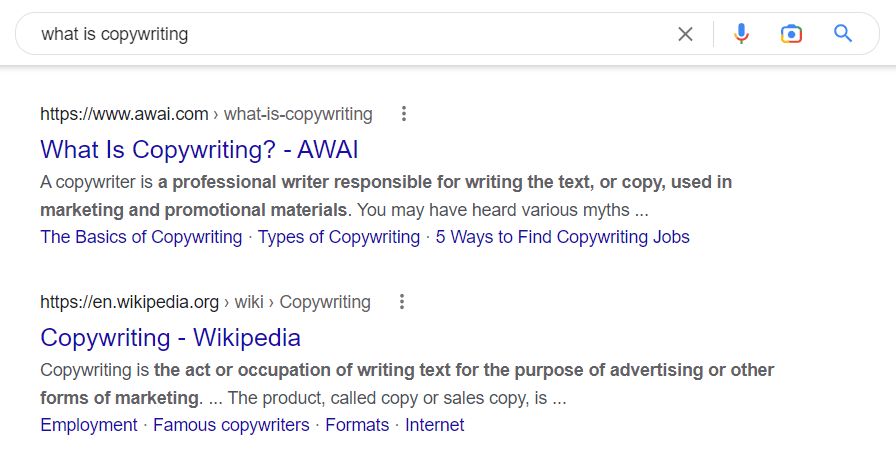
2. Write in the Active Voice
Writing in the active voice is a general preference for copywriting – it makes your copy more engaging and exciting to read. This is no exception in SEO copywriting.
You can use tools like Hemingwayapp or Grammarly to check your text for any passive voice. Writing in too much passive voice affects the user experience, and it can harm your rankings.
3. Focus on the User Experience
Like we’ve said before, SEO copywriting should be focused on your user. Always make sure your copy is easy to read and offers a great user experience.
An important part of this is breaking your copy up into short paragraphs that are easy to read and easy to skim. Long walls of text provide a poor user experience – especially for those on mobile devices.
The easier it is to scroll your content, skim-read it, and find answers and action items, the better. Don’t be afraid to incorporate bullet points and numbered lists to make your content easier to digest.
4. Focus On Your Title
Your page title is possibly the most important element of your copy. It’s what entices people to click on your page and read your content.
For SEO, make sure you include your target keyword in your title to make it more relevant. Then, optimise your title based on what performs best in the SERPs. Pay attention to the other top-ranking articles, and try to create a title that is attention-grabbing and competes with these titles.
Some great elements to include in your title are the date, a number (eg. 25 Ideas for…), or to address the user (eg. Tips You Can Use). Try to make your title actionable, and exciting. Of course, make sure that you actually address any content that is mentioned in your title.
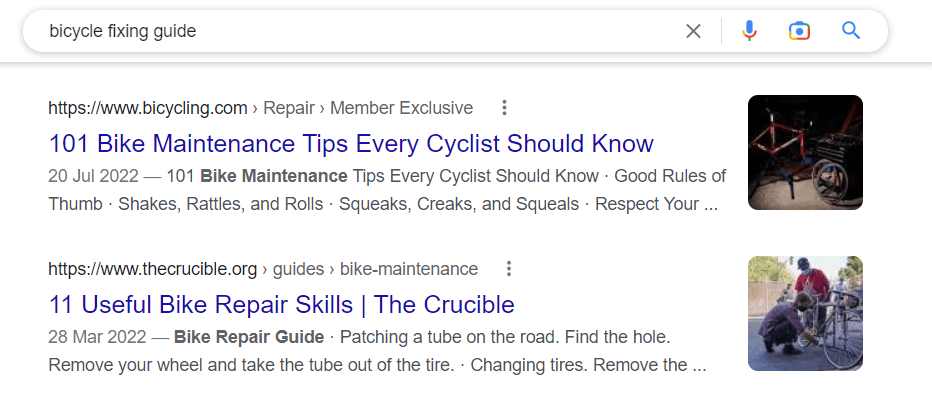
5. Check for Plagiarism
You must never plagiarise content – this is just general good practice in life.
However, it’s especially important in SEO copywriting. It’s also something you might not realise you do.
When you write content, you’ll use other articles as sources, you might include a few similar phrases from these articles into yours that Google could see as plagiarism. You might even include duplicate content from your own web pages. Both cases could result in SEO issues for your web page. That’s why it is crucial to write unique content and check for plagiarism.
6. Optimise Content With SEO Tools
There are many SEO tools you can use to improve your SEO copywriting.
These include keyword research tools like Ahrefs or Keyword Planner, or content optimization tools like Surfer SEO. When writing SEO-friendly content, using these tools can help you create content that is more SEO-friendly based on data from the SERPs.
Conclusion
SEO copywriting is pretty straightforward. The most important thing is to just create a high-value piece of content. Achieve this, and you’ll be in a far better position to rank well.
Of course, your content also needs to be optimised for search engines with the right keywords and tactics. Follow the strategies above, and you should be able to achieve this relatively easily. It will make a big difference to your overall SEO strategy performance.
